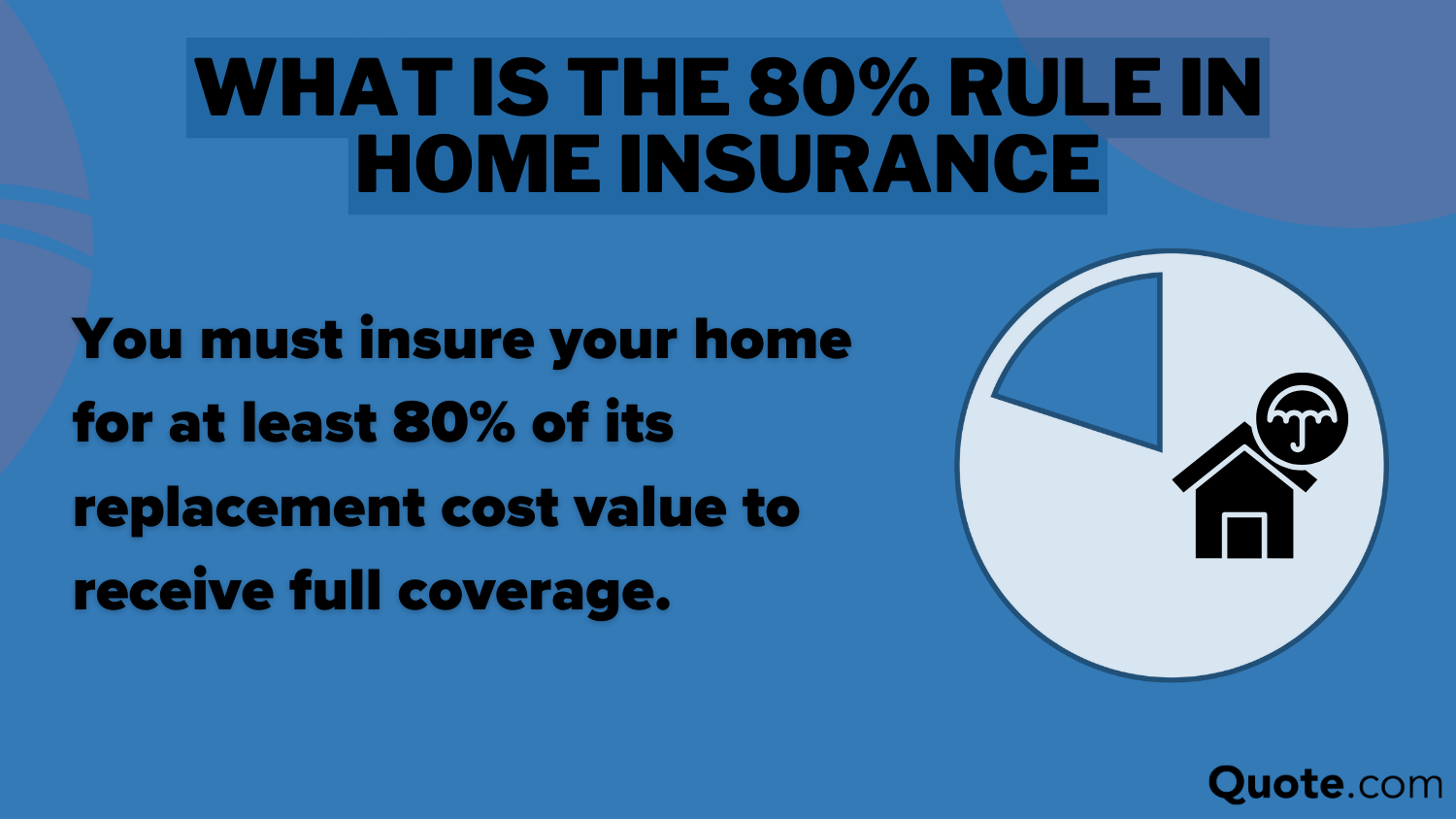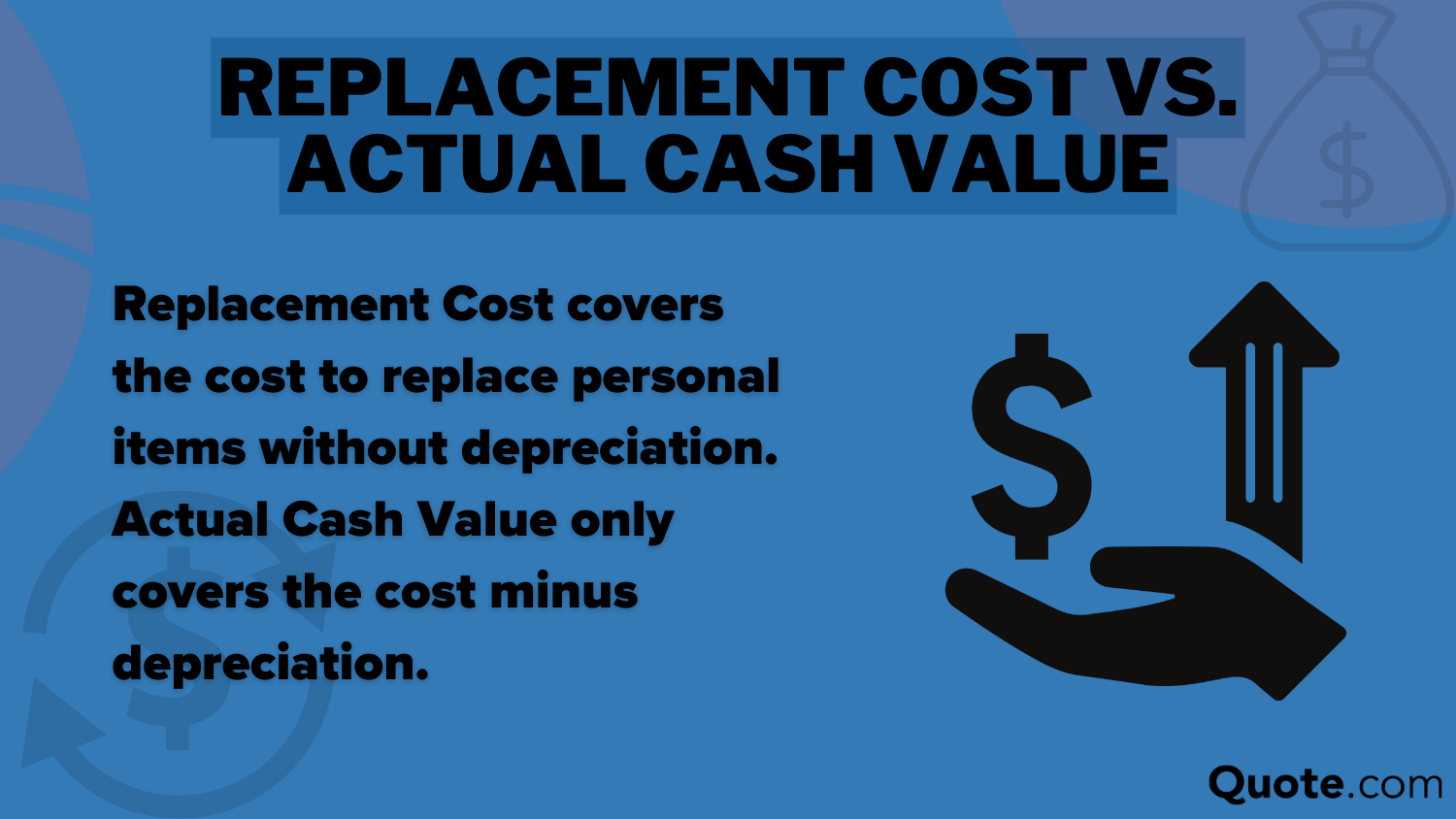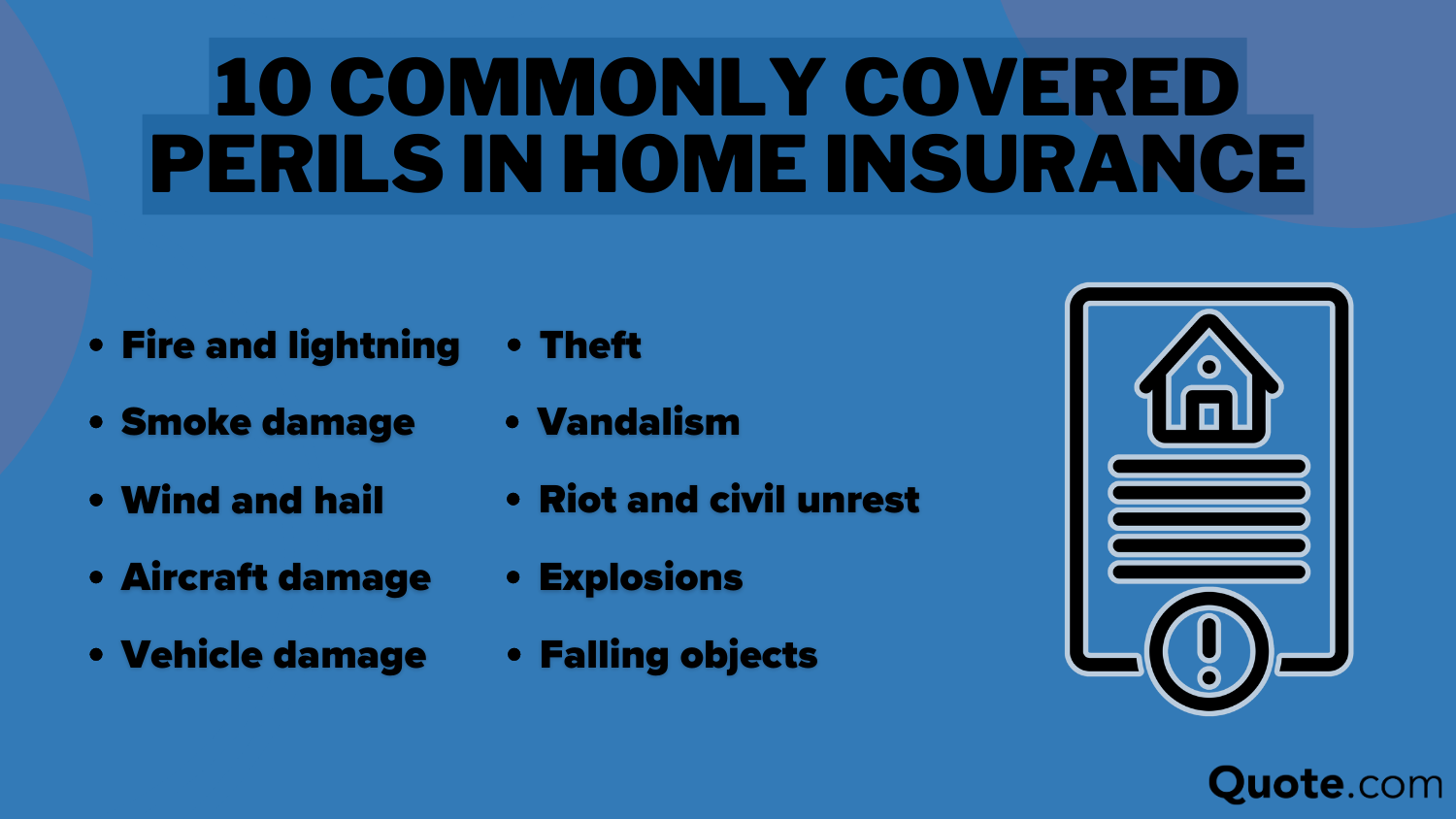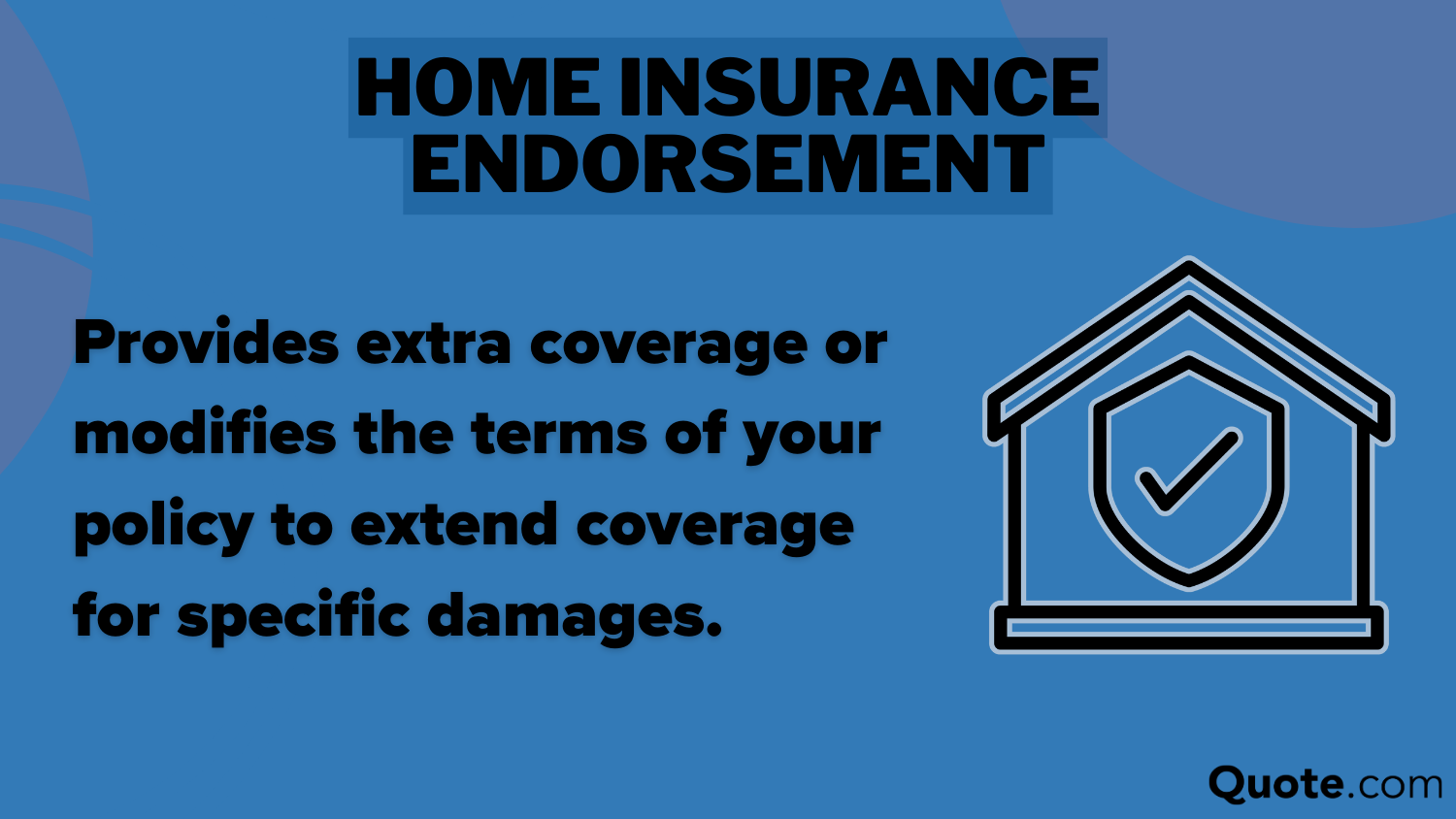Understanding the 8 Types of Homeowners Insurance Policies (2025 Coverage Explained)
Get the right kind of coverage for your home by understanding all eight types of homeowners insurance. Over 70% of homeowners have HO-3 Special Form policies, but you have options to ensure you're fully protected. Scroll through the HO-1 Basic Form policy to the HO-8 insurance policy, and everything in-between.
Free Home Insurance Comparison
Compare Quotes From Top Companies and Save
Secured with SHA-256 Encryption
Leslie Kasperowicz
Farmers CSR for 4 Years
Leslie Kasperowicz holds a BA in Social Sciences from the University of Winnipeg. She spent several years as a Farmers Insurance CSR, gaining a solid understanding of insurance products including home, life, auto, and commercial and working directly with insurance customers to understand their needs. She has since used that knowledge in her more than ten years as a writer, largely in the insurance...
Farmers CSR for 4 Years
UPDATED: Oct 24, 2024
It’s all about you. We want to help you make the right legal decisions.
We strive to help you make confident insurance and legal decisions. Finding trusted and reliable insurance quotes should be easy. This doesn’t influence our content. Our opinions are our own.
Editorial Guidelines: We are a free online resource for anyone interested in learning more about insurance. Our goal is to be an objective, third-party resource for everything legal and insurance related. We update our site regularly, and all content is reviewed by experts.
UPDATED: Oct 24, 2024
It’s all about you. We want to help you make the right legal decisions.
We strive to help you make confident insurance and legal decisions. Finding trusted and reliable insurance quotes should be easy. This doesn’t influence our content. Our opinions are our own.
On This Page
Your home insurance plan covers the home’s structure and your personal belongings. Understanding the eight types of home insurance policies will help you pick the right coverage.
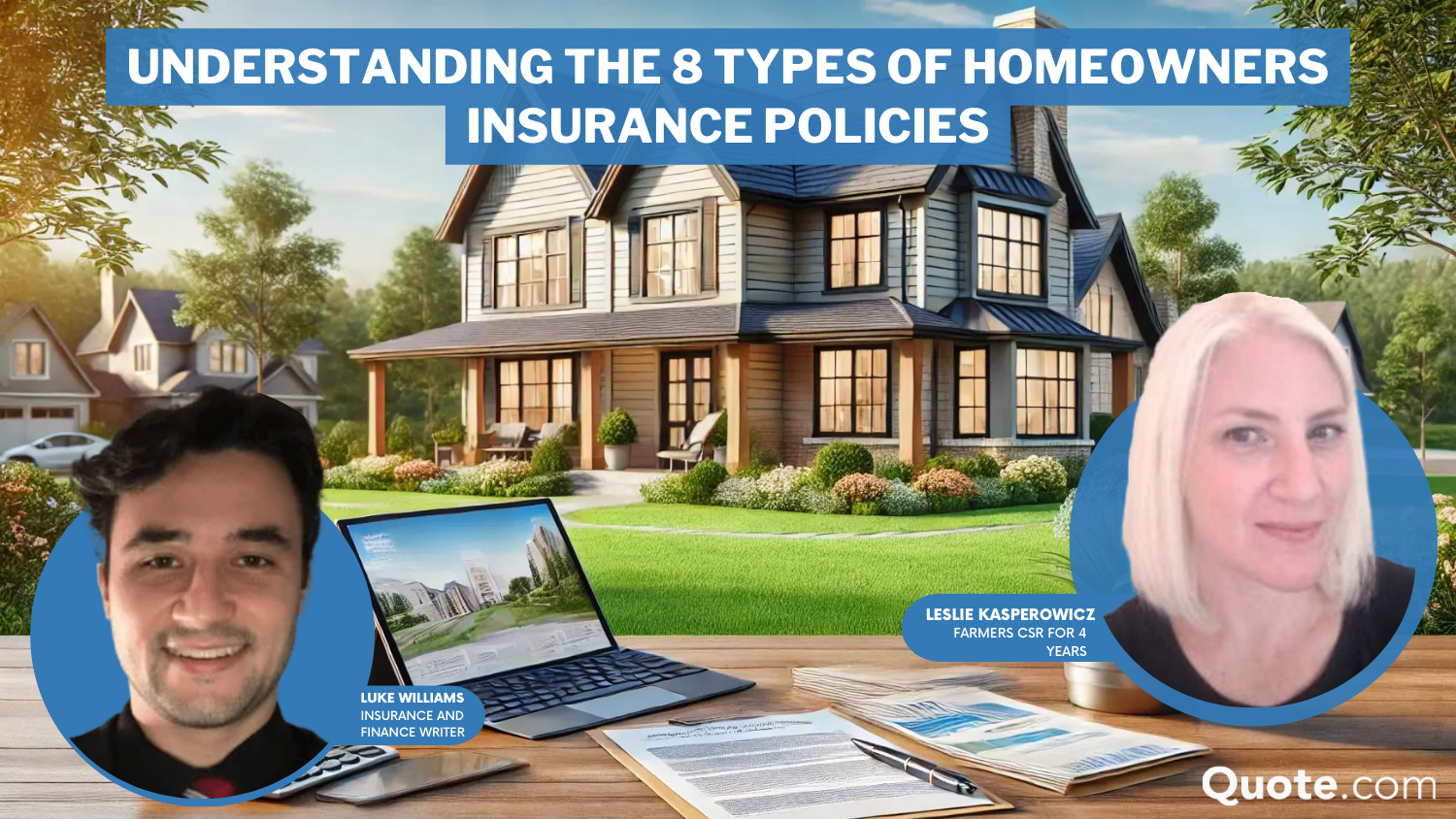
Each policy, from basic HO-1 to specialized HO-8, offers varying levels of protection. For instance, some types of home insurance provide replacement coverage by default but have higher monthly rates. We can help you estimate how much home insurance costs based on where you live.
Use this guide to learn how to read homeowners insurance policy and compare the pros and cons of the different types of homeowners insurance policies. Enter your ZIP code to find affordable home insurance near you.
- All home insurance policies provide dwelling and contents coverage
- The most popular homeowners insurance policies are HO-3 Special Forms
- Home insurance endorsements protect against common policy exclusions, like floods
Your Home Insurance Policy Explained
What are the three main types of homeowners insurance coverage? No matter what type of policy you buy, homeowners insurance coverage is broken into three basic sections:
- Dwelling Coverage: Protects your home’s structure
- Contents Coverage: Protects your personal belongings, like furniture, clothing, and electronics
- Medical Payments Coverage: Pays medical costs and legal fees if someone is injured on your property
You can choose different levels of coverage, which will impact your home insurance rates, and rates will vary with each company.
For instance, Progressive homeowners insurance is pretty cheap at $145/month for $500,000 in coverage when compared to USAA homeowners insurance. Compare at least three companies to find an affordable price near you.
Homeowners Insurance Monthly Rates by Provider & Coverage Amount
Insurance Company $150,000 Policy $200,000 Policy $300,000 Policy $500,000 Policy $750,000 Policy $1 Million Policy
Allstate $112 $132 $176 $140 $185 $220
Amica $127 $150 $200 $165 $205 $250
Country Financial $117 $138 $184 $150 $190 $230
Erie $114 $135 $180 $145 $185 $225
Lemonade $107 $126 $168 $135 $175 $210
Liberty Mutual $122 $144 $192 $160 $200 $240
Openly $120 $141 $188 $155 $195 $235
Progressive $117 $138 $184 $145 $190 $230
State Farm $117 $138 $184 $150 $190 $230
The Andover $122 $144 $192 $160 $200 $240
USAA $188 $221 $294 $250 $310 $370
How much homeowners insurance do you need? That depends on the type of home you own. You should at least insure 80% of your home’s value to meet the requirements of your mortgage lender.
Policies can cover either the replacement cost or actual cash value (ACV) of your property, with ACV policies being cheaper but offering lower compensation.
Replacement cost coverage pays to repair or replace your home and belongings without deducting depreciation, so you get enough to restore your property to its original condition. Actual cash value (ACV) coverage, on the other hand, factors in depreciation, meaning you only get paid what your items are worth today, not what you paid for them.
While ACV policies are cheaper, they leave you with less money to rebuild or replace your stuff. If you want full protection, replacement cost is the better choice. Some policies automatically offer replacement coverage so compare all eight types of homeowners insurance policies below to find the best coverage for your situation.
Enter your zip code below to view companies that have cheap insurance rates.
Secured with SHA-256 Encryption
Understanding the Eight Types of Homeowners Insurance
What is homeowners insurance? There really isn’t a list of homeowners insurance coverage A, B, C, and D — home insurance policies are numbered 1-8.
What kind of damage does homeowners insurance cover? That varies by policy type. Some named peril policies only cover the damages listed in the policy and nothing else, while others have open coverage save for a few exclusions.
This home policies chart breaks down the different types of coverage for homeowners and renters so you can easily identify the basic types of homeowners policies that are used today:
Types of Homeowners Insurance Policies and What They Cover
Type Name Coverage
HO-1 Basic Form Only covers 10 named perils, including fire, theft, and falling objects.
HO-2 Broad Form Covers HO-1 perils plus certain water damages and electric surges
HO-3 Special Form Open coverage for all perils except listed exclusions
HO-4 Contents Broad Form Renters insurance for personal belongings, liability, and loss of use
HO-5 Comprehensive Form Same open coverage as HO-3 at replacement value
HO-6 Unit-Owners Form Condo insurance for personal belongings, liability, and loss of use
HO-7 Mobile Home Form Mobile home policy with same open coverage as HO-3
HO-8 Modified Coverage Form Historic home coverage for dwellings more than 40 years old
Scroll down for a complete list of coverages and exclusions included with the different types of property insurance listed in our HO policies chart.
HO-1 Basic Form Policy
This policy is bare bones and only covers the 10 named perils listed above. It is the only home insurance policy that doesn’t offer personal liability or medical payment protection.
Less than 2% of homeowners buy this policy because it doesn’t meet the insurance requirements of most mortgage lenders or homeowners associations.
HO-2 Broad Form Policy
An HO-2 policy provides a little more coverage than an HO-1. It includes the 10 perils plus:
- Volcanic eruptions
- Freezing damage
- Weight of snow and ice
- Power surges
- Accidental damage to heaters and air conditioners
- Accidental discharge or overflow or water or sewage
HO-2 policies also provide dwelling and contents coverage at replacement value rather than ACV.
HO-3 Special Form Policy
This is the most popular type of homeowners insurance — over 75% of homeowners have this coverage because it’s the most flexible. It automatically provides replacement coverage for your home and actual cash value for personal belongings.
As an open-peril policy, it covers all damages listed above except those explicitly excluded in the policy. The most common exclusions to HO-3 home insurance are:
- Earthquakes
- Floods
- Nuclear waste or hazard
- Mold or fungus
- Foundation damage
- War
The exclusions will be clearly listed on your policy. You may be able to add endorsements to cover certain events and natural disasters depending on your insurance company. Learn how to compare homeowners insurance quotes to get the best price on this policy.
HO-4 Contents Broad Form Policy
HO-4 policies are more commonly known as renters insurance. It protects against the same 16 perils but only covers a tenant’s personal belongings since they don’t own the home or structure.
Policies typically cover items at their replacement value, but this can vary by company. HO-4 insurance also provides personal liability and loss of use coverage.
HO-5 Comprehensive Form Policy
These policies are designed for high-value homes and items. It covers the same 16 perils, but coverage limits exceed normal policy levels.
HO-5 coverage add-ons aren’t typically available with standard HO-2 or HO-3 policies.
Kalyn Johnson Insurance Claims Support & Sr. Adjuster
All HO-5 policies cover replacement value for structures and personal items by default, which means insurance rates are higher. This is one of the most expensive types of homeowners insurance.
HO-6 Unit-Owners Policy
HO-6 insurance is designed for condominiums. It provides personal liability, loss of use, and medical payment coverage, but also offers unique protections for walls, ceilings, and floors. Any renovations you make to the condo after you buy it are also protected.
Even if your condo association provides insurance, an HO-6 policy can fill in the gaps and allow you to choose between replacement cost coverage or ACV.
HO-7 Mobile Home Insurance
This is an HO-3 policy for mobile homes, providing additional coverage for trailers, manufactured or modular homes, and sectional homes. It covers any damages except those listed in the policy.
Don’t wait for a storm to hit before taking action. Prepare your home and loved ones with these simple safety steps. https://t.co/ZOq5Nml31h pic.twitter.com/BQCPZw6cSN
— State Farm (@StateFarm) July 5, 2024
However, HO-7 coverage only applies when the home is stationary. It will not pay for any damages that occur while the home is actually mobile.
HO-8 Modified Coverage Form Policy
This type of home insurance is available for homes more than 40 years old. Most historic homes have this policy because it protects items you can’t replace easily, like vintage crown moldings or hardwood floors.
Policies only protect against the 10 named perils, and buying an HO-8 policy can be expensive and restrictive. If you own a historical property, research the exclusions and any endorsements you can add to your policy to be better protected.
Common Home Insurance Endorsements
Homeowners insurance forms and endorsements can extend your coverage limits and protect your home against additional risks you may not have thought of, such as inflation and safety ordinances.
Adding endorsements will increase your monthly home insurance rates. Check out this list of common endorsement options for homeowners:
- Earthquake Coverage: Since most policies exclude moving earth damages, this will protect your property in the event of an earthquake.
- Flood Coverage: Flood damage is a common exclusion, but this add-on protects against hurricanes, high tides, heavy rain, and other natural floods.
- Identity Theft Coverage: Home insurance policies don’t protect against the financial loss of identity theft unless you buy this endorsement.
- Service Line Coverage: Home insurance doesn’t apply to utilities, so get this add-on to protect your cable, internet, electric, sewage, and water lines.
- Inflation Guard: This endorsement calculates inflation during the term of your policy and increases coverage limits to match the value at the time of your claim.
Some add-ons are more expensive than others, and premiums will vary by company. Always compare insurance quotes from three or more companies to get the best homeowners insurance.
Read More: Lemonade Home Insurance Review
Bottom Line on the Different Types of Homeowners Insurance
There are eight different types of home insurance. Each policy type has unique features and coverage levels.
An HO-3 special form policy is the most common type of homeowners insurance because it provides open coverage and flexibility.
Brad Larson Licensed Insurance Agent
The best type of homeowners insurance for high-value homes is an HO-5 policy. It provides the same open coverage as HO-3 policies but with higher coverage limits for valuable property and personal items. Rates will be higher, so determine how much home insurance costs based on where you live before you buy.
Other policies are designed for condo owners, renters, and historic homes. Enter your ZIP code below to compare the types of homeowners insurance available near you.
Enter your zip code below to view companies that have cheap insurance rates.
Secured with SHA-256 Encryption
Frequently Asked Questions
What type of homeowners insurance coverage should you get?
How much homeowners insurance you need depends on the value of your home. Always buy a policy with enough coverage to protect at least 80% of your home’s value.
What is the most common type of homeowners insurance policy sold?
The most popular home insurance plan is an HO-3 special form. It provides open coverage except for listed exclusions, and homeowners can choose between replacement cost or ACV.
Which homeowners policy provides the most coverage?
An HO-5 Comprehensive Form policy offers the most coverage. It covers all perils (except listed exclusions) and automatically provides replacement cost coverage for repairs and replacements.
Which homeowners policy is the most basic?
An HO-1 Basic Form is the most bare-bones insurance policy. It provides only dwelling and contents coverage for 10 listed perils. Most companies do not sell this type of homeowners insurance.
What is the best type of home insurance?
The best types of homeowners insurance provide enough coverage for your home, personal belongings, and liability and medical coverage if someone is injured or killed on your property. Compare homeowners insurance quotes to find the best policy online before you buy.
What does an HO-8 homeowners policy cover?
HO-8 Modified Coverage Forms are only available for homes over 40 years old. It provides dwelling, contents, medical payments, and liability coverage but only protects against 10 listed perils: fire, smoke damage, wind and hail, aircraft damage, vehicle damage, theft, vandalism, riots, explosions, and volcanic eruptions.
What does an HO-3 not cover?
An HO-3 insurance policy doesn’t cover the exclusions listed in the policy. The most common exclusions are floods, earthquakes, war, and nuclear damage.
What is the difference between HO-3 and HO-8 insurance policy?
HO-8 insurance policies are designed for historic homes that are over 40 years old but don’t provide the same open coverage as an HO-3 policy. It only protects against 10 listed perils but with higher limits that cover the unique structures in older homes.
What is the most common damage to your home that insurance does not cover?
Flood and water damage from burst pipes (not caused by freezing) are the most common damages home insurance will not cover. Learn more in our home insurance coverage guide.
What is an HO-6 homeowners policy?
HO-6 insurance is designed for condominiums. It provides personal liability, loss of use, and medical payment coverage, and policies protect walls, ceilings, floors, and any renovations.
Who is the number one home insurance company in America?
Allstate is the largest homeowners insurance company in the U.S. Rates are around the national average at $160/mo, but compare free home insurance quotes online to find the cheapest company near you.
Which homeowners insurance company has the highest customer satisfaction?
Erie Insurance has the highest customer satisfaction according to the annual J.D. Power home insurance survey.
Enter your zip code below to view companies that have cheap insurance rates.
Secured with SHA-256 Encryption
Leslie Kasperowicz
Farmers CSR for 4 Years
Leslie Kasperowicz holds a BA in Social Sciences from the University of Winnipeg. She spent several years as a Farmers Insurance CSR, gaining a solid understanding of insurance products including home, life, auto, and commercial and working directly with insurance customers to understand their needs. She has since used that knowledge in her more than ten years as a writer, largely in the insurance...
Farmers CSR for 4 Years
Editorial Guidelines: We are a free online resource for anyone interested in learning more about insurance. Our goal is to be an objective, third-party resource for everything legal and insurance related. We update our site regularly, and all content is reviewed by experts.
